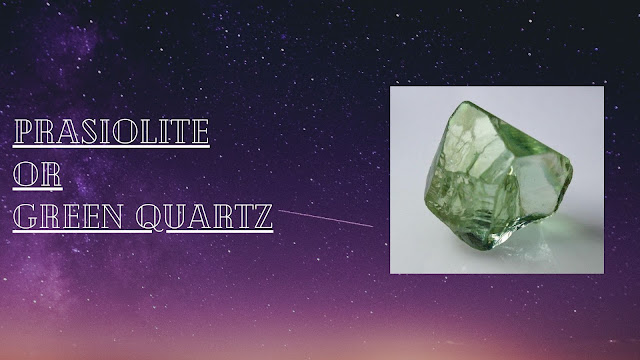AMETHYST
What is
Amethyst
Amethyst is Purple or Violet shaded quartz gemstone. It is a form of Quartz and comes in different hues of Purple.
As it is a
variety of Quartz crystal it is made from Silicon Dioxide and its
Purple shade is because of impurities Like Iron and in some cases some
other elements or Transition metals.
Amethyst is
a semi-precious gemstone but, till 18th century Amethyst was
considered a precious gemstone. It was said to be a part of “Cardinal”.
Cardinals are said to be the most precious
gems which are Diamond, Sapphire, Emerald and Ruby. Until a large
deposit of Amethyst were found in Brazil and it lost its value as precious gem.
Amethyst has
a rich history and is said to have a tail of more than 2000 years. It
was valued a lot and was considered to have mystical powers. Greek considered
it a powerful stone against drunkenness.
Tibetans made beads of Amethyst and gave it a
very sacred value and relate it to Buddha. In Middle Ages it was
a symbol of royalty. Medieval European soldiers use to wear Amethyst,
believing it keep you cool.
Ancient
Egyptians and Romans used Amethyst for “Intaglio Engraved Gems”, which means
that the single side of the stone was engraved with some image of a personality
or Inscriptions.
Romans king Caracalla
(Commonly known as Antonius, was emperor from 198 to 217) image was found
engraved on Amethyst in the treasury of Sainte-Chappelle.
Amethyst are
found in Geode, which are said to form when Gas bubbles get
trapped in the Lava and when it cools and hardens around trapped bubbles.
These bubbles
form Cavities in which Amethyst is formed. These bubbles can range from microscopic
size to feet’s long.
After the
formation of Cavities, process of Crystal Formation takes place. It is
said that the Salt Water which enters the lava moves in the cavities. As
salt water contains Silica and other minerals that it bring along
with it.
Then with
passing Thousands or Millions of years pressure and reactions form crystals
within the cavities. It’s not only Amethyst that is formed but, layers are
formed of different elements e.g. Celadonite, then Agate, then Quartz and
finally Amethyst is formed.
Amethyst is
a stone of February. It takes its place at 7 out of 10 on Mohs
Hardness Scale.
Though
Amethyst is a semi-precious gemstone but its value depends on its Color
instead of Carats. Amethysts are often given names like Plum colored,
Lavender colored, Rose colored, Raspberry or Grape colored.
If Amethyst is in its Rich shade of Violet
with a slight tint of Blue it is considered very valuable, rare and
can be priced very high.
Types of
Amethyst
Deep
Purple/Deep Russian or Siberian Amethyst
Amethyst
which is of Rich Purple or Reddish Purple Shade with slight tints of Blue seen
in light is considered the best quality gemstone.
Amethyst
like Turquoise has become a color name along with the name of gem. Amethysts
are often identified or valued on the bases of the color it possess.
Such Amethyst is known by the
name “Deep Russian” because such colored Amethysts were found in Siberia
with color so rich and beautiful. Later, that mine of Siberia was exhausted
and now they are very rare to found in Russia.
Yet high
quality Amethyst are found in Brazil, Uruguay and Sir Lanka.
Rose De
France Amethyst
It is the
type of Amethyst which is found in lighter shades of Purple more of like
Lilac shade.
It is not
considered of much value, as that with the pure Purple shade and is not very
expensive. But, now it is said that it is gaining its value because it looks
very beautiful in jewelry and people are considering it.
It is found
in best quality in Brazil, Minas Gerais and Maraba. Rose de France is
also found in Africa, South and North America.
Prasiolite
or Green Quartz (sold as Green Amethyst)
There is no such thing as Green
Amethyst. It’s a word used by dealers, which is not a true statement and is
a misleading name.
Federal
Trade Commission has
strictly forbidden such moves, for instance, Yellow brownish colored quartz is
sold by calling it “Citrine” or “Yellow Emerald”. P.s there is no such thing
as Yellow Emerald.
Same goes
with Green Amethyst there is nothing known as Green or Pale Green
Amethyst. An Amethyst naturally or mostly synthetically is produced by passing Amethyst through
“Heat Treatment or Irradiation” process to change its color.
At 150 Degree
Celsius, Amethyst color is forced to change and takes the Greenish shade
which is said to be Prasiolite or Green Quartz not Green Amethyst.
Ametrine
Ametrine is
not counted in the category of Amethyst by some specialist, they state that it
has its own identity.
Ametrine
basically is a naturally found form of Quartz, it is a mixture of Amethyst
and Citrine. It is dual color zoned Purple and Yellow or Orange.
It is known
as Trystine or Bolivianite. It is known as Bolivianite because it
is found in abundance, in the mines of Bolivia.
Amethyst
Quartz or Tumbled Stone
Amethyst
Quartz is the combination of Amethyst and Milky Quartz and it is also
Color Zoned like Ametrine.
It is mostly
purple from the top and white from the base, as this base rock
known as Quartz is attached to it.
It is also
found in patterns like V or Banded forms and people often make there beads to
use it in the jewelry.
Origin of
Amethyst
Amethyst are found in Brazil(Largest Produce of Amethyst), Zambia, Bolivia, Uruguay, Sri Lanka, USA, Mexico, Austria, Pakistan, Morocco, Russia Myanmar, China, Namibia, Kenya, Madagascar and India.








thankyou =)
ReplyDelete